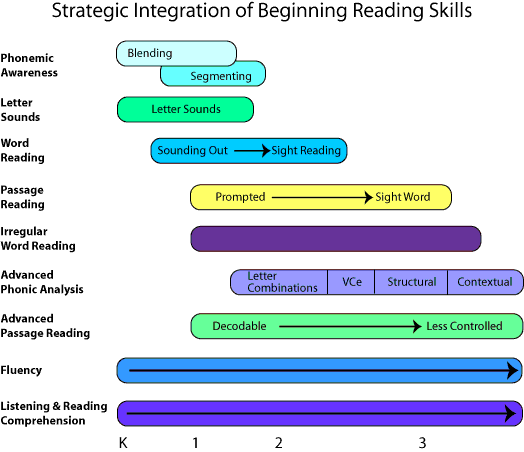Instruction

Instruction within a Schoolwide Reading Model

The Problem and Context:
- 20% of students have significant reading problems.
- Most reading failure is unnecessary.
- Teaching reading is a job for an expert. (Moats, 1999 (see References)
- The majority of teacher preparation colleges underestimate the depth of preparation and practice needed.
The Solution to the Problem: Prevention!
- Identify early and intervene strategically.
- Focus on the vital signs.
- Teach "less" more thoroughly.
- Instruction before construction.
- Hold instructional time sacred.
- Expect and plan for "different" levels of instruction (e.g., small groups, double dose).
- Monitor progress to determine if children are learning enough.

Three Organizing Principles for Getting Beginning Reading Success
- Earlier rather than later: Prevention and early intervention are supremely more effective and efficient than later intervention and remediation for ensuring reading success.
- Schools, not just programs: Prevention and early intervention must be anchored to the school as the host environment and the primary context for improving student reading performance.
- Evidence, not opinion: Prevention and early intervention pedagogy, programs, and procedures should be based on trustworthy scientific evidence.

Scientific Learning Principles
- Must attend closely to features of sensory task.
- To maintain attention, must be able to perform task at a high level of accuracy (if the task is too difficult, learning cannot be achieved and changes in sensory map do not occur).
- Behavior must be reinforced in a highly consistent and rewarding manner to maintain motivation and drive learning through corrective feedback.
- Highly consistent, repetitive input must be given over an intense period of time so that consistent patterns of neuronal activation occur repetitively, building specific stimulation patterns to "represent" the input from the environment in the brain.
- Once a behavior is established (i.e, the response is accurate and consistent), learning can be driven most effectively by systematically increasing the difficulty of the task as performance improves.
Tallal, Merzenich, Jenkins, & Miller, 1999. (See References)

